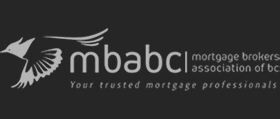Many people call us asking if they can get a mortgage, but they also want some renovation money to do some upgrades to the home. This typically happens when they o a 5% down purchase, and are told that’s the maximum mortgage they can get, but then they want additional funds to renovate or upgrade. There are two ways that someone can get the money:
1. Borrow it on a different credit facility or line of credit (but pay a higher rate)
2. Have the renovation money added to the mortgage in a program called “Purchase Plus Improvements”
The video blog below covers how this program works, as there are several steps and quirks to it. Enjoy!
[flashvideo file=wp-content/uploads/2009/12/Purchase-Plus-Improvements.flv /]
Transcription of the Video Blog:
Hi Everybody, Rowan Smith from the Mortgage Centre. There is a program that a lot of people aren’t aware of, and that is the “Purchase Plus Improvements” or “getting renovation money” when you try and buy a place. This program has been around for a long time. They are a little “Admin Heavy” depending on your bank, there maybe even more administration that you have to do.
I want to explain how the renovation money works. Especially if you are putting less than 20% down. If that’s the case, putting less than 20% down, you’re going to involve CMHC. So here is how the process would work.
Let’s assume for the sake of argument that you buy a $100,000 home. You want five grand for renovations. What you have to do is get a quite DURING YOUR SUBJECT REMOVAL PERIOD, so before you can even get an approval, you need to get a quote from a contractor that itemizes all the work you are going to have done and an estimated cost.
You will then provide that to me. I will then provide it to the lender. When the lender sends it to CMHC for approval (because CMHC approves all deals – or some mortgage insurer does – with less than 20% down), they’ll look at the purchase price, they’ll look at the value that you are adding by doing these improvements, and assuming they are reasonable, and not too high a percentage of the property value (generally 10% or $40,000 – if you go over that, you may have to treat it more like a construction mortgage). It you are within those confines: trying to borrow less reno money than 10% (which is the case in our example of $5,000 being borrowed on top of a $100,000 purchase price) you’re borrowing about 5%, CMHC will then approve the deal. This assumes you qualify for that bit of extra money.
Now if you think about it though, the Canadian maximum mortgage is 95% financing. So, you will have borrowed 95% (if you are putting 5% down) plus another five grand. You’ve effectively borrowed 100% of the purchase price, so the bank is assuming that you’ve added that value to the property. That’s the whole purpose of the “purchase plus improvements.”
Now, when do you get the money?
You are NOT going to get the cheque cut to you so you can go pay cash to your contractors and get a good deal. You have to pay a contractor to do the work. Or you have to provide all the receipts for all the materials. You can do the work yourself, but there is a heck of a lot more paperwork – and you still need a quote up front from a contractor, even if you don’t use them – you’re going to have to track everything. So when you buy materials, you’ve got to itemize it all, and keep a good running account of it. If they’ve offered to give you five grand for it, they’re only going to give you five grand. You can’t be going back to the trough later on looking for a little bit more.
So, two things:
1. You have got to have the quote up front after writing the offer – when you are trying to get the mortgage approval of all the work you want to have done. This means your contractor is going to have to go through there.
2. The funds will not get released to you right away. You pay interest on them, and they get released to your lawyer or solicitor handling the transaction on the closing date.
3. You have to then go get the work done, and then prove it’s done, either by way of an inspection or by receipts, and this depends based on which institution you deal with. At that time (assuming the work is 100% done) the lender will authorize the lawyer to release the money to you.
So, in summary there, there are three steps, and this is why it is admin heavy.
1. Get your quote. Get the approval. Once you get the approval you buy your home.
2. Do the work. The work has to be paid for somehow: either on your lines of credit, cash, or you’ll have to find a contractor willing to do it on credit for you.
3. Once the work is done, you get the lender’s representative to authorize the release to the lawyer. The lawyer then gives you the money.
It’s a painstaking process, but it’s the only way if you are putting less than 20% down that you can get renovation money.
Alternatively, you can go get an unsecured line of credit, but you’ll be borrowing it at much higher rates than mortgage rates (which are secured). Don’t expect a prime rate personal loan or below prime rate personal loan or line of credit unless it is secured by a mortgage.
So if you know of anyone in this situation: looking for renovation money, I can guide them through the process, explain how it works and try and take some of the mystery out of it because there are so many steps it can be very aggravating.
For The Mortgage Centre, I’m Rowan Smith.





